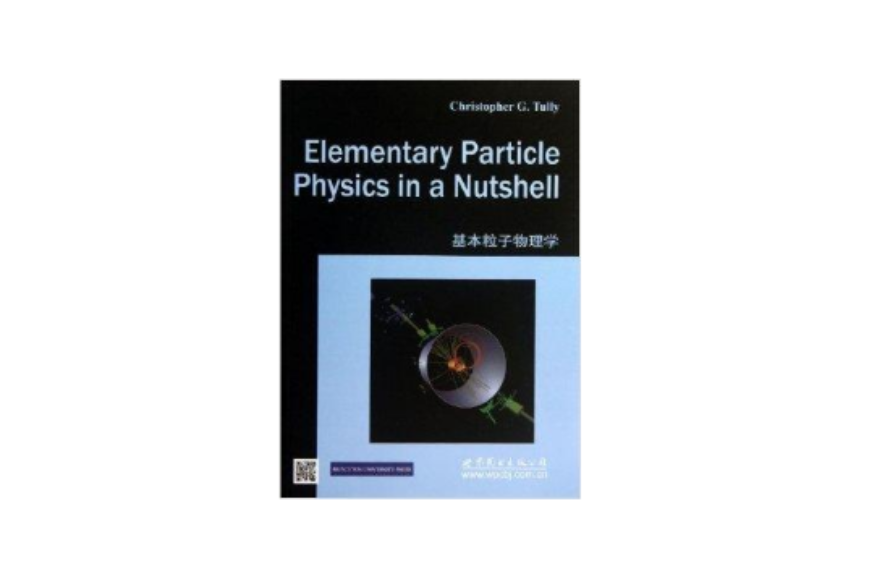《基本粒子物理學(英文)》提供了研究該領域的最前沿的知識,正在switzerland的cern進行的大型強子對撞機實驗將在很大意義上改變我們對基礎粒子物理和宇宙的理解。《基本粒子物理學(英文)》在實驗和理論上的重大突破是研究生學習和科研工作者理解和解決lhc物理問題的優質教程。目次:粒子物理簡述;狄拉克方程和量子電動力學;規範原理;強子;探測器和測量;中微子振盪和ckm測量;e+e—對撞機物理;強子對撞機;higgs物理。
基本介紹
- 書名:基本粒子物理學
- 作者:塔利 (Christopher G.Tully)
- 出版社:世界圖書出版公司北京公司
- 頁數:303頁
- 開本:16
- 品牌:世界圖書出版公司北京公司
- 外文名:Elementary Particle Physics in a Nutshell
- 類型:科學與自然
- 出版日期:2013年3月1日
- 語種:簡體中文, 英語
- ISBN:9787510058233
基本介紹
內容簡介
作者簡介
圖書目錄
1.1 Handedness in the Equation of Motion
1.2 Chiral Intenctions
1.3 Fundamental Strong Interaction
1.4Table of Elementary Partides
1.5 Mass and Charge
1.6 Hypercharge Interaction of the Standard Model
1.7 Higgs Mechanism
1.8 Program of study
1.9 EXercises
1.10 References and Further Reading
Dirac Equation and Quantum EIectrodynamics
2.I Natural Units and Conversions
2.2 Relativistic Invariance
2.3 Pauli—Dirac Representation and Connedion with Nonrelativistic QM
2.3.1Constants of Motion
2.3.2Velocity in Dirac Theory
2.4 Probability Current
2.5 Free.Particle Solutions in the Pauli—Dirac Represemation
2.6 AntiDar七icles
2.6.1Charge—Conjugation Symmtry
2.7 Lorentz Transfomations
2.7.1Lonrentz Invariance of the Dirac Equation
2.7.2Lonrentz—Invariant Lagrangians and the Euler—Lagrange Equations
2.8 Weyl Representation
2.8.1 Weyl Spinor Two—Component Formalism
2.8.2 Free—Particle Solutions via Lorentz Boost Transform
2.9 Proiection Operators and Completeness Relations
2.io Discrete Lorentz Transformations
2.11 Covariant Form oft_he Electromagnetic Interaction
2.12 Relativistic Propagator Theory
2.12.1 Source Terms: Coulomb Scattering Potential
2.12.2 Photon Propagator
2.12.3 Massive Spin—1 Propagator
2.13 S—Matrix and Feynman Rules for QED
2.13.1 Cross Sections and Decay Rates
2.13.2 Worked Example: Mott Scattering
2.14 Spin Statistics
2.15 Exercises
2.16 References and Further Reading
Gauge Principle
3.1 Global Internal Symmetries
3.2. Local Gauge Symmetries
3.3 S U(2) and the Weak Interaction
3.3.1 Gauge Transformations of Massive Spin—1 Four—Potentials
3.3.2 Non—Abelian Four—Potentials
3.3.3 Weatc and Electromagnetic Interactions
3.4 Electroweak Gauge Interactions
3.5 Gauge Interaction of QCD
3.6 Structure of Elementary Matter
3.7 Spontaneous Symmetry Breaking
3.8 Higgs Mechanism
3.8.1 Minimum Single—Doublet of Complex Scalar Fields
3.9 Glashow—Weinberg—Salam Theory of the Electroweak Interactions
3.1o Neutral—Current Feynman Rules
3.11 Fermion Masses and the CKM Mixing Matrix
3.12Neutrino Masses and the CKM Mixing Matrix
3.13 Interaction Vertices in the Standard Model
3.14 Higgs Mechanism and the Nambu—Goldstone Theorem
3.15 Goldstone Boson Equivalence
3.16 Anomaly Cancellation
3.17 Exercises
3.18 References and Further Reading
Hadrons
4.1 Color Antiscreening and Quark Confinement
4.2 Light Mesons and Baryons
4.3 Flavor Symmetry
4.3.1 Nuclear Isospin
4.3.2 Meson Wave Functions
4.3.3 Baryon Wave Functions
4.4 Heavy Flavors, Quarkonia, and Meson Factories
4.5 Exercises
4.6 References and Further Reading
Detectors and Measurements
Neutrino Oscillations and CKM Measurements
Collider Physics
Hadron Colliders
Higgs Physics
Index

